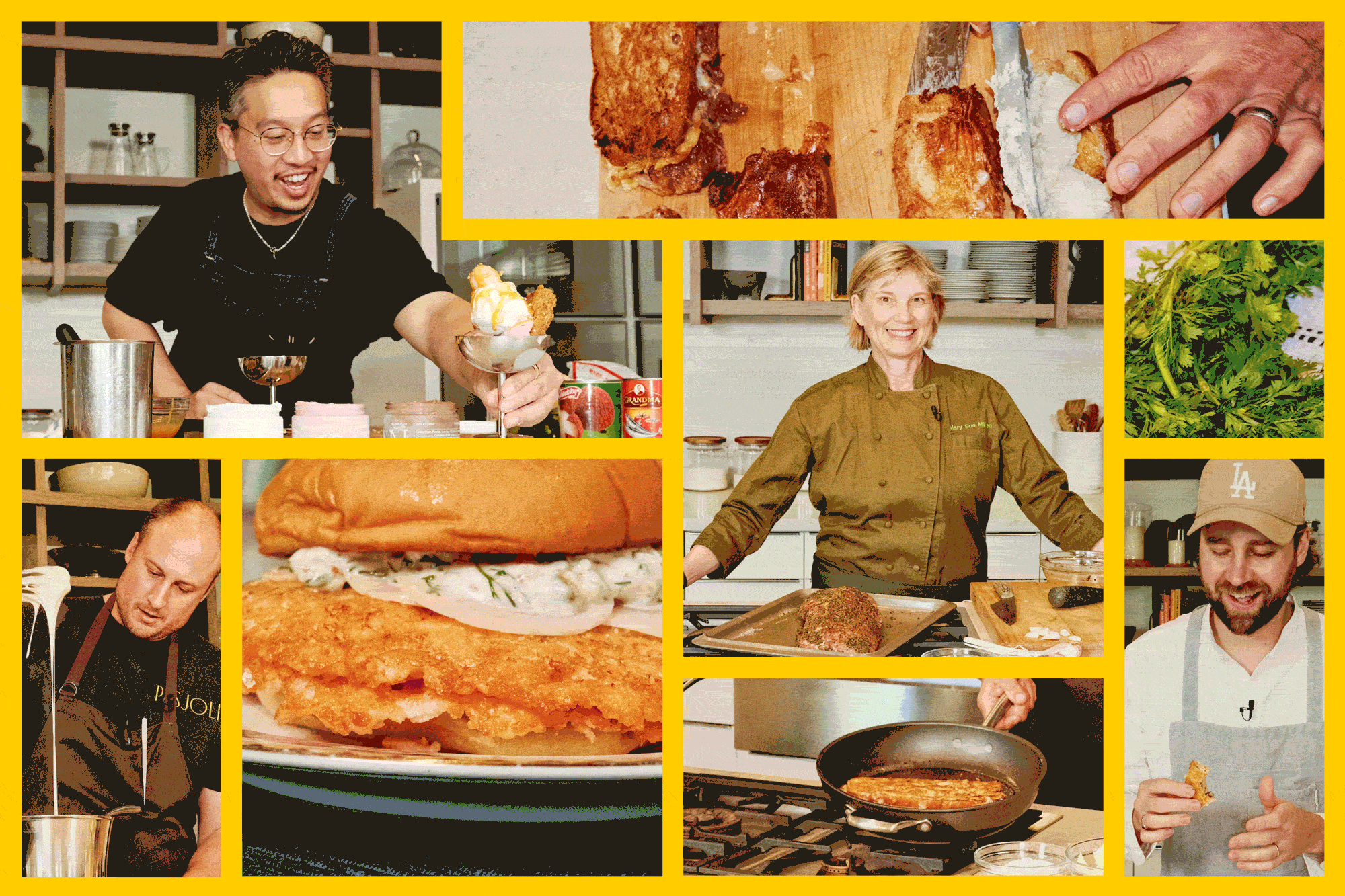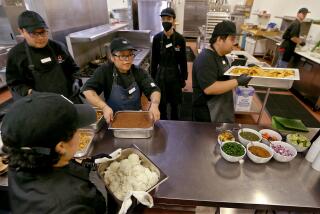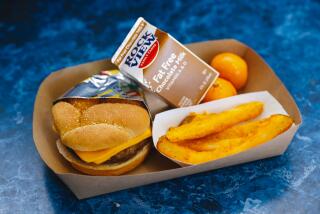School Cafeteria Cuisine Goes . . . Haute Cuisine?
- Share via
BLACKSBURG, Va. — In school cafeterias across the nation, the scene is replayed time and again: A frazzled woman with a hair net and fogged glasses plops some mystery meat on a tray.
Now, haute cuisine chefs in tall white hats have been brought in by the federal government to teach cafeteria cooks how to make student lunches more appealing and nutritious, with such dishes as confetti tossed spaghetti, crunchy vegetable pizza and tabbouleh.
“We can do it in restaurants,” said chef David St. Jean-Grubb of the Culinary Institute of America. “Why can’t we do it in food service?”
In a recent study, only 1% of the schools met the federal government’s 1994 dietary guidelines, including limits on fat and salt, said Ellen Haas, undersecretary of food and nutrition for the U.S. Department of Agriculture.
The USDA reported in 1993 that 38% of the calories that 25 million students a day eat at school came from fat--15% of it saturated fat. It also said students were consuming twice the recommended amounts of sodium.
To reverse those numbers, the department has allocated $14 million and enlisted the help of the Culinary Institute to train school food service workers this summer on ways of changing lunch menus and cooking techniques.
The USDA is also under orders to improve the nutritiousness of the food it ships to schools around the country. That means more freshly cooked meals and less reliance on meat, processed food and entrees children traditionally love, such as corn dogs and pepperoni pizzas.
“There will be a very significant shift in the kinds of lunch that will be served in the next school year,” Haas said. “For example, we’ve reduced the fat content in beef, taken out sodium in canned carrots and provided more turkey.”
In one of seven training programs taking place across the country, St. Jean-Grubb and other crisply adorned chefs revealed some trade secrets along with techniques in cooking tastier, healthier food.
“You have to get inside a child’s head,” St. Jean-Grubb said. “Why does a child like fast food? Because it all tastes sweet.” To get them to eat carrots, for example, add some brown sugar or honey, he suggested.
Also blanch vegetables to retain their bold colors, and flavor foods with spices and citrus rather than salt, he urged.
The 24 cooks dressed in white aprons and chef’s hats in a test kitchen at Virginia Tech made entrees such as barbecue turkey pizza, confetti tossed spaghetti and white crunchy vegetable pizza.
Appomattox High School cafeteria manager Bernadette Servis gave a skeptical wince as she mixed a bowl of tabbouleh. But when she tried the Mediterranean dish of bulgur wheat and chopped fresh vegetables, she admitted she liked it, but wondered how to get students to try it.
“I’ll probably have to start it out with taste samples on the cafeteria line,” Servis said.
Such skepticism among veteran school cooks is widespread, said Thomas Lance, who manages the food service for the public middle school in Bristol.
“A lot of people, especially women who work with me in the school, are set in their ways,” he said, adding that his efforts to introduce some low-fat dishes have failed.
“It’s an uphill battle,” said Beverly Oakley, a nutritionist with the National Food Service Management Institute. “We’re competing against McDonald’s and the other fast food chains.”
In the past, school cafeterias haven’t offered much competition. Oakley hopes that will change when children get their first taste of the new dishes in the fall.
“We don’t want the children going home hungry,” she said. “It doesn’t matter how nutritious it is or how good we think it tastes. If the children don’t put it on their trays, we’ve accomplished nothing.”
More to Read
Eat your way across L.A.
Get our weekly Tasting Notes newsletter for reviews, news and more.
You may occasionally receive promotional content from the Los Angeles Times.










